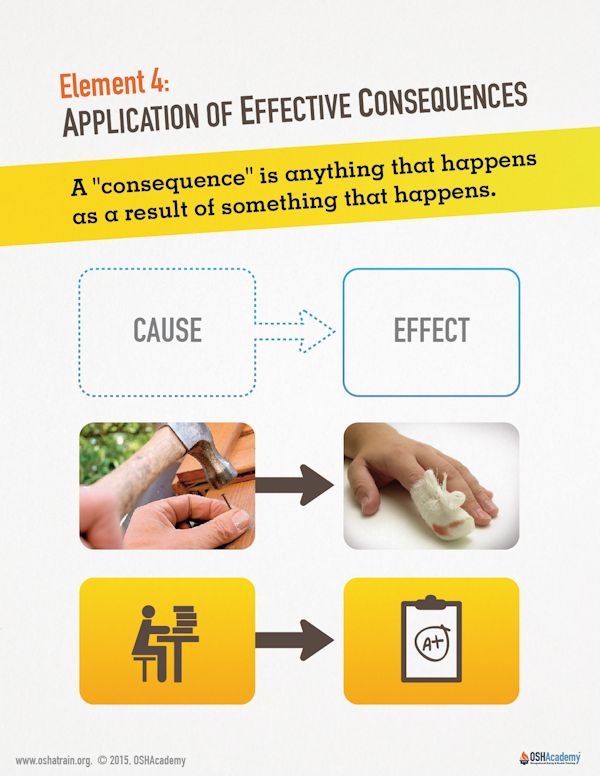Element 4: Application of Effective Consequences
What is a Consequence?
A consequence is the result or effect of an earlier action, decision, or event.
Another way to express it is to think of cause and effect: the initial behavior is the "cause," and the consequence is the "effect" of the cause. In each example below, the initial behavior or action is the cause, and the reaction is the effect or consequence. Let's look at some examples:
- If you hit your thumb with a hammer (the cause), then the natural consequence is pain, injury, embarrassment, etc. (the consequence).
- If you think safety is not important, then you take unsafe shortcuts that can get you injured.
- If a supervisor yells at you for something you have done, then you might yell back, apologize, go home, or even quit.
Is There Any Escape From Consequences?
In the workplace, it's important to understand that there is no such thing as 'no consequence' for an action. There is ALWAYS a consequence.
For instance, if a supervisor thanks a worker for making a safety suggestion, the supervisor's recognition is a consequence (positive). If the supervisor ignores the worker who made the safety suggestion, the "act" of ignoring is also a consequence (negative).
Effective consequences increase desired behaviors and decrease undesired behaviors. If an employee’s safety performance meets or exceeds the employer's standards, some sort of recognition should follow. On the other hand, if the employee makes an informed choice not to comply with the company's safety rules, appropriate corrective action should follow.
Knowledge Check Choose the best answer for the question.
2-7. In the statement, "If you hit your thumb with a hammer, your thumb will hurt," which part of the statement describes the effect?
You forgot to answer the question!

